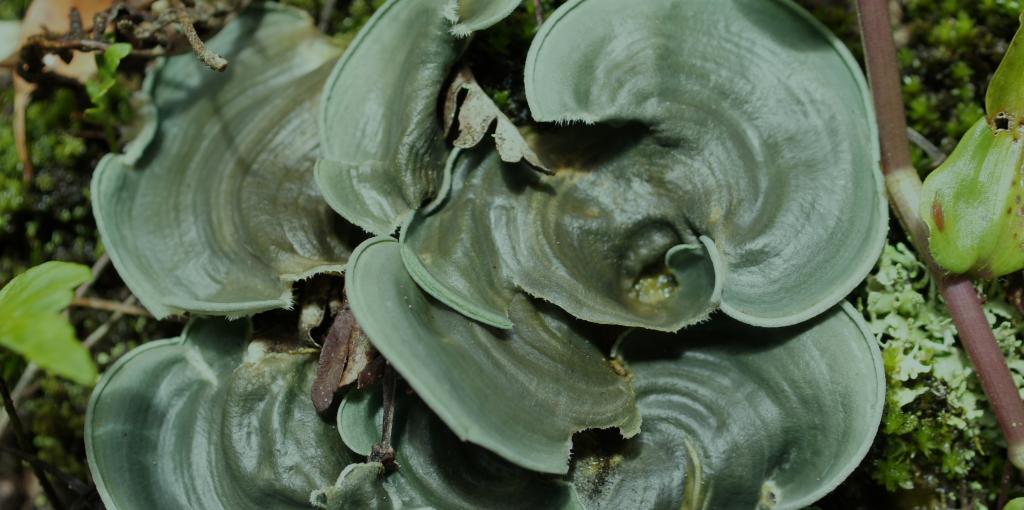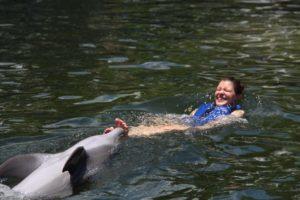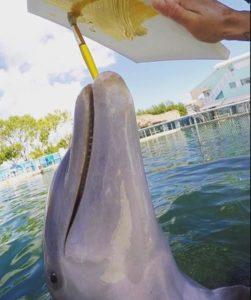Sara Veizaga
Admission CTAs
DOLPHINS PLUS MARINE MAMMAL RESPONDER
Animal Care and Training Internship
Story, video, and images by Sara Veizaga
During my internship at Dolphins Plus Marine Mammal Responder, I had to opportunity to learn how to properly care for marine mammals under human care. Each day, I would observe 3 daily training and husbandry sessions. During the training sessions, we are required to ask thoughtful questions in order to understand trainers’ intentions behind each method. During husbandry sessions, we would observe wound cleaning, sonograms, blood draws, and urine draws. In addition to observing these sessions, we would learn to properly sanitize any equipment used in dolphin care. We also participated in acting as transporters during voluntary beaches. Trainers would ask dolphins to come out of the water, and then we would put our hands on the sides of the dolphin to prepare them to be transported for CT scans. In addition to facility work, we would all participate in a series of lectures covering marine mammal biology and in addition to facility work, we would all participate in a series of lectures covering marine mammal biology and physiology, cognition, CT scans, resume workshops, and proper approaches to training.
Living in the Florida Keys has taught me to approach each day with conservation in mind. One of the most important things the Keys have reinforced to me is how important the ocean is, and how beloved marine mammals will serve as a vehicle in preserving the ocean. Getting to know DPMMR’s family of Atlantic bottle-nosed dolphins has been one of the highlights of this internship.
Each dolphin has a unique personality of its own, which can make training them both an interesting and challenging experience. Different dolphins find different things reinforcing when training, and it is up to the trainers to learn what those are. It is also important that secondary reinforcement is used, so the dolphins aren’t only interested in sessions for food. This helps dolphins associate toys, affectionate back rubs, and human interaction as forms of reinforcement for correct behavior. For example, one of the older males, Alfonz, is going through a phase where he does not find food reinforcing. It is currently mating season, and he finds the attention of female dolphins most reinforcing. Because of this, sending him to the fence (where the females are), is used as a reward for performing a behavior correctly. One of the younger males, Isaac, learns very quickly, and if his learned behaviors are not challenging, he will often lose interest during a training session. As a result, a technique called chaining is used, where he will be asked to perform multiple tasks simultaneously. Each dolphin has its own personality and no two sessions are alike, and this only makes the public (and the trainers) love them more.
One of our first duties as interns is to create, memorize, and deliver a 30-40 minute educational briefing to guests before they enter the water with the dolphins. Our briefings would cover areas in marine mammal conservation, about our facility, and about dolphin anatomy. I discovered many things by compiling information about marine mammal conservation, and was able to learn a lot through our guests. While there are many negative things that can be said about what happens to dolphins in the wild, I try to encourage guests to focus on the positive things that they can do to help. Two of the most important things I would encourage them to do are to 1) limit their use of plastic straws, 2) monitor the sustainability of the seafood they are eating (through the Seafood Watch app). Many guests did not know the vast number of plastic straws that are consumed by each person every year (~500) or the devastation that can happen to dolphins by overfishing. Part of my personal mission in pursuing marine science is to give people the opportunity to connect with dolphins, and to have that experience inspire them to want the best for our oceans. Being able to deliver these briefings directly contributed to that goal, as does working at a facility that allows people to connect with dolphins.
While many guests expressed their enjoyment of the educational briefings, there have been occasions where a different kind of guest appeared in the audience. There are activist groups who are strongly against the work that we do at DPMMR, because they believe all animals should be free, and not under human care. Occasionally, DPMMR’s sister facility, Dolphins Plus, would have activists visit during briefings and challenge the company’s mission with several heated questions and comments. A staff member even mentioned a time an activist tried to cut down the gate into DPMMR’s facility to free the dolphins. A lot of this motivation is based on disinformation, which many staff members are prepared to counter with factual information. Research facilities like DPMMR are interested in learning how to give marine mammals the best possible life in the facility, as well as for dolphins in the wild. Zoological facilities and aquariums donate a lot of money each year into restoring endangered species, and to research that tries to understand the needs of these animals. Many of these facilities have the true best interest of the animals at heart, so many people with those same intentions end up working at these facilities.
One of my favorite things about the Florida Keys is how environmentally conscious the residents are. Some of my biggest learning experiences occur from listening to the residents around me. Each day on my lunch break, I snorkel in the canal right next to the facility. I am able to see many types of fish, snails, lobsters, and other marine life. One of the community’s favorite residents is the resident nurse shark that lives in the canal. When I saw her, I immediately loved her. There is something very endearing about a small, harmless version of a predator most people fear. A few days later, she appeared with fishing line around her gills. This was a very heartbreaking sight, as many of the staff felt this shark was member of the community. A few of the trainers and I tried to lure her into a net to pull off the line, but she unfortunately swam off before we could get to her. Experiences like this inspire me to engage in environmentally-friendly practices more frequently and regularly. One of the reasons the Keys residents put time into saving the shark is because they value keeping our oceans healthy. Because Keys residents are exposed to the ocean regularly, they are able to understand its needs. This gives us the opportunity to communicate the needs of the ocean to tourists, who will only be there for a short time, and are unlikely to directly see something as devastating as a nurse shark with fishing line around its gills.
The experiences I have had getting to know the dolphins at DPMMR and from living in Key Largo have led me to care more deeply for the ocean. In the same way that ocean animals have affected me, I hope the public’s interaction with marine life inspires them to want to protect the ocean.
Back to https://science.gmu.edu/news/spotlight-evpp-494-internship


